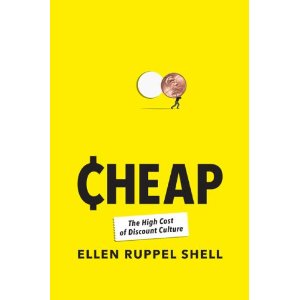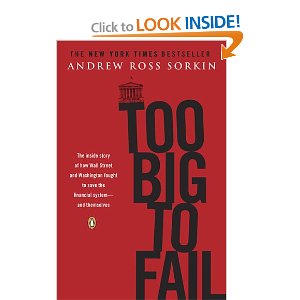CAN Europe be saved?
Posted by shoshievass in Uncategorized on January 22, 2011
Nobel Prize winner Paul Krugman asks the question:
http://www.nytimes.com/2011/01/16/magazine/16Europe-t.html?_r=1
Discussion to follow soon…
Simon Johnson on Facebook and Goldman
Posted by andywuandywu in Uncategorized on January 6, 2011
Simon Johnson, the former chief economist at the International Monetary Fund, co-author of “13 Bankers”, and professor at the MIT Sloan School, on the Goldman Sachs/Facebook deal.
The Future of Microfinance
Posted by Christian in News and Current Events on November 29, 2010
For my Market Design class, I’m analyzing a hypothetical scale-up of the Bandhan Ultra Poor graduation program studied by Course 14 Professors Banerjee and Duflo. My project will also acknowledge some of the concerns raised by this harrowing report on the future of microfinance in India from the NYT (via my Market Design professor Al Roth):
http://marketdesigner.blogspot.com/2010/11/microfinancial-crisis.html
utilitarianism, political justice, and government cheese
Posted by Mehl in News and Current Events on November 3, 2010
I’m a sucker for good economics, but I’ll admit that there are places where it doesn’t belong. One of these places is often in the mouths of political candidates during election season–for many reasons beyond the singular point of this piece. But the point that I’d like to harp on is the strict divide between economics and political debate– namely, that seven times out of ten it shouldn’t be part of yours just yet.
Economics is the rational study of efficiency: how best to maximize utility, catch a derivative and set it to zero. Government is a study of sometimes irrational fairness. The two work closely together and are necessarily intertwined in practice, but also necessarily unequal in discourse and theory. They are not on par, cannot be used interchangeably in the pursuit of good policy, and do not deserve the same pedestal in a democratic society such as ours for given reasons.
The basis of our government and our culture as a whole favors being fair over being efficient– the spirit of democracy feeds on the idea that there is no number that outweighs justice. It brings to mind a number of things: utilitarianism for one, which with a special calculus quantifies utility in order to reach a balanced equation for the kind of problem seemingly found only in Omelas,. How many people’s marginal happiness is worth a single child’s undeserved torment? Economics claims that this can be a fair amount. Justice says zero, uncompromisingly.
In a rational society we maximize happiness and profit: leaving poor children without textbooks is a justified solution so long as the detriment of their situation is outweighed by the utility that society receives from taxpayers keeping their dollar. In a just society we maximize equality of opportunity– when that equality is breached, when one child grows up with an unequal capability to engage his or her society as an individual, we know that we have failed on a major level. The fact that America is allowed to forget this mantra in favor of economic buzzwords during political open season is intolerably ignoring the foundation of our society.
This revolves back around to debate and good policy. Because our country favors fairness over economics, good debaters can only argue economics once they’ve justified that their policy is fair. And conversely, once you’ve justified that something is fair it’s your duty to justify that it is also maximally economically efficient, given the constraints. But substituting one for the other is building houses of long elaborate assertions on top of a foundation made of sand– and it drives me crazy as an observer.
Which brings me lastly to government cheese– a colloquial term for government handouts provided to the extremely poor, motivated by a program during the Reagan administration that actually, literally, distributed surplus cheese to those on welfare.
I like to keep my opinions moderate and blunt. Furthermore, I don’t believe there’s a binary opinion out there that could reasonably cover as broad an issue as austerity in government spending. But I do have one binary option to present to anyone considering political office: before you consider abusing economics, please either justify first that your platform preserves the foundations of what we consider justice or get off the podium.
Grad Classes in Course 14 (Part 2)
I decided to delay the posting of this Part 2 (of a two-part series) in order to get more experience in these classes. I’m currently enjoying 14.121/14.122, 14.771, and Harvard’s Market Design class (Ec 2056a). All three of my grad classes are also being taken by undergrad friends whom I work on psets with and talk to about the course material. This shared experience makes the subjects a whole lot more fun. I’ll wrap up this series by presenting my characterizations of first-year and second-year classes.
First-year classes (14.121-14.124, 14.381-14.382, 14.451-14.454) are usually described as very functional. These are “toolbox” classes meant to equip the budding economist with an arsenal for tackling problems. The core material you’re learning can be very dry, but awesome theoretical or empirical applications are not in short supply. For instance, 14.121 covered consumer theory, producer theory, aggregation, and other core micro concepts, but also featured numerous General Equilibrium applications. My favorite was the testing of an elaborate theoretical risk-sharing model with data from three poor ICRISAT villages in India.
Second-year classes offer a much more narrow, yet concentrated view of a particular field in economics. These classes inundate you with papers upon papers of studies of that particular field. If you’re truly passionate about a field of economics and feel that you can handle tons of reading, take a field class! Not only will you hone your research skills; you might also discover that idea that leads to an exciting new research project in economics.
Why do we Procrastinate?
Posted by johnwang in Uncategorized on October 21, 2010
Lately, I’ve been thinking about why people procrastinate. Hunt Allcott, a visiting professor in the Econ Department, talked about the prevalence of procrastination in his UEA Lunch. Allcott noted that procrastination seems to occur quite frequently, and that many psychological studies have shown that people prefer to procrastinate instead of smoothing work of a certain period of time. But in theory, you would expect that people would finish a constant amount of work each day, until the task is finally completed. Thus, if you have W amount of work, and have N days until you need to complete it, you would finish W/N amount of work each day.
Obviously, this doesn’t seem to be the case empirically. People procrastinate all the time, not just about long, arduous assignments, but also about quick tasks (like doing laundry). It seems, though, that people procrastinate less for quick tasks. If something can be done in a couple minutes, people tend to get it out of the way. However, people tend to really put off longer assignments, like studying for an exam (which you could conceivably have an entire semester to study for).
I came across a paper that explained many of these phenomena. For instance, it went over why people procrastinate at all when it seems in their best interests to complete work at a steady pace. The paper creates a model that incorporates the utility derived from not working. The authors, Markus Brunnermeier, Filippos Papakonstantinou, and Jonathan Parker, posit that overconfidence in one’s own ability to do a certain task leads to incorrect planning. The authors argue that people usually only view the “best case scenario” so that people drastically overestimate their ability to quickly finish a task. However, this overconfidence actually optimizes a person’s utility function. For instance, suppose a task can be completed in two time periods. If a person procrastinates, that person will have more work in the second period, and thus have lower utility during that period. However, during the first period, one’s utility is increased by multiple distinct factors. First, the person gains utility from not actually completing the task. Second, the person gains from expecting to have little work in the second period because of overoptimism. Finally, in the first period, the person has a decrease in perceived uncertainty about the amount of work required (the person thinks he/she knows exactly how much work will be required because of his/her overoptimism). The combined effect of less actual work, less expected work, and greater certainty in the first period outweighs the added work one gains in the second period. Thus, procrastination is actually optimal in terms of maximizing a person’s utility function (the paper proves this in terms of their model in Appendix B).
This paper is exciting not just because of its conclusions, although I always have wondered why people (including me) put things off for so long, but because it also shows the enormous flexibility of economics and economic modeling in particular. One can use economic analysis to explain many different phenomena, even if they do reside in the psychological or sociological realms.
Economists Saving Lives (and doing other awesome stuff)
Posted by Jing Li in Classes, News and Current Events on October 21, 2010
This term I am cross-registering at Harvard to take Market Design, taught by Professors Alvin Roth and Peter Coles. The class is offered jointly by the Harvard Economics Department and the Harvard Business School. I have interests in computer science and economics, and I actually first heard about market/mechanism design from the computer science literature. However, the research done in these two fields are quite different. Generally, economists are concerned about efficiency, equilibrium stability, and incentives, while computer scientists try to optimize the algorithms behind the markets.
Before I list off too many vague terms, here’s an example of market design at work: kidney matching. Every year, more and more Americans are placed on the waitlist for transplant kidneys to replace their own failing or diseased kidneys. Thousands of people either die or become too sick to receive a transplant while waiting for a matching kidney. It is important to note is that people have two kidneys, but can lead normal lives with just one. A lot of people on the waitlist have loving relatives or friends who would donate one of their kidneys, but they unfortunately do not have the same blood types and other characteristics necessary for transplant.
Kidney exchange first came about when two relatives met at a dialysis center waiting room. They realized that the relative of one patient is a match for the other patient, and vice versa — they could swap kidney donations, and both families would be better off! Professor Roth has worked to establish databases of recipient and donor pairs, and they run a stable matching algorithm on the database every two weeks. The frequency at which we run the matching can change the number of total matches we get over time, since new patients are being added to the database and current patients can be removed for various reasons. Two weeks has just worked out well in practice.
[I actually had a problem on my 6.046 take-home exam last fall motivated by kidney matching. We were supposed to find the fastest algorithm possible to match people, given a set of donor parameters and recipient requirements -- computer science and economics working together ![]() ]
]
Theoretically, it is possible to have longer exchange cycles than just two. (Let A1, B1 be a recipient-donor pair, A2, B2 be a second donor pair, etc, for a total of n pairs. Then we can imagine a situation where A1 can donate to B2, A2 can donate to B3, A3 can donate to B4, etc, until we loop back and An donates to Bn.) In practice — and this is also where economic incentives come in — we need to have all the operations simultaneously to make sure that all the donations actually happen. For a 2-way swap, that’s 4 simultaneous operations, requiring 4 surgical teams, 4 operating rooms, the works. Some longer chains and larger swaps have happened, but they are rare.
One of our MIT professors, Parag Pathak, was a graduate student at Harvard and has worked with Al Roth and co-authors to design allocation mechanisms for public school lotteries in New York, Boston, and San Francisco. The goal is to design the system for which it is a dominant strategy for people to submit their true preferences for schools. This removes the confusion from an important decision like choosing schools and makes the school-matching process stable and efficient.
The applications that we have discussed include job market matching, job markets for couples, and dating websites. We will have a guest speaker this week to present his findings in generalized matching and another guest speaker to talk about the shortage of IP addresses. Did you know that IP addresses were in shortage? Luckily, MIT got a lot of IP addresses way back when the internet first came about. I would just be listing off a bunch of terms if I wanted to talk about the theoretical topics in the course, so visit the course site if you’re interested (link below).
For my final project, I’m exploring the market for vacation house swaps. I just came across a news article about the Iraqi government auctions for their gas fields, though, so I might switch topics. Any suggestions for topics I should consider for my final project in market design would be appreciated.
If you’re interested in learning more about market design, here are some useful links:
Market Design blog by Al Roth and Peter Coles: http://marketdesigner.blogspot.com/
2056a course site: http://isites.harvard.edu/icb/icb.do?keyword=k72549
Al Roth’s game theory, experimental economics, and market design page: http://kuznets.fas.harvard.edu/~aroth/alroth.html
The Market Design class that I am taking (2056a in Harvard code) is a graduate course, with game theory as a prerequisite. If you are interested in taking this class, you should take game theory (e.g. 14.12) as soon as possible because 2056a and 14.12 are only offered in the fall (and also because game theory is awesome!).
I will likely blog next about Development Economics and 14.771 next, stay tuned!
Japan’s Premium Pricing
Posted by Maggie L. in News and Current Events on October 14, 2010
Ever wonder why in New York, there are lines of Japanese tourists at Saks and Fifth Avenue? Or why wherever there are designer outlets, there are small middle-aged Asian women teeter-tottering from the weight of their designer haul?
The answer? Japan’s premium pricing.
When foreign goods enter Japan’s market, they become, by default, a ‘premium good’. This is the consequence of Japan’s government policy where protection tariffs increase the cost of foreign goods and informal cartels keep the pricing high. A $298 designer bag in the U.S. has a market price of $711 in Japan. However, with the advent of online auction sites and mid-street level brands like Uniqlo (which has their production site in China), Japanese consumers are becoming more and more disillusioned and dissatisfied with the high costs they price for designer goods. What will be interesting to see is if government policy will actually change or if Japanese consumers will continue to embark on ‘shopping trips’ to the U.S. and Europe for their fill of premium goods at Western market value.
5 summer reads to squeeze in before Fall 2010!
Posted by Maggie L. in Uncategorized on August 12, 2010
What should you do with the remaining month? I’m sure many of you are wrapping up your internships, UROPS, research (or maybe you’re travelling abroad). Whatever the case, you should grasp onto the tail end of summer and squeeze in some time to read up on some leisure books. Below are a few of my favorites from the summer:
1. Cheap
A very interesting look into the history and consequences of discount stores on both consumers and our economy. Did you know that Ikea’s President negotiated trade terms with the prime minister of Vietnam? Neither did I!
2. 13 Bankers
A very exact and thoughtful account of what led to the Financial Meltdown. One of the Co-authors is actually a Sloan Professor. Take a crack if you want to get down to the details on the financial meltdown.
3. The Hollywood Economist
 Just another look into what you can do with your Course 14 degree…fascinating peek into the finances of the film industry and what the boxhit figures really mean.
Just another look into what you can do with your Course 14 degree…fascinating peek into the finances of the film industry and what the boxhit figures really mean.
4. Too Big To Fail
Another post-recession book. Krugman cited it during his spring talk at MIT. It’s massive, slightly daunting, and altogether holds some pretty ominous predictions for the future. However, there’s probably no other time you can tackle this monster except for the summer.
5. Delivering Happiness
This book is actually still on my reading queue. I’m trying to get to it before the start of school- it’s an account of Tony Hsieh, the founder of Zappos – the highly successful online retail company- and his success.
Grad Classes in Course 14 (Part 1)
Posted by Christian in Uncategorized on June 16, 2010
Thinking about grad school? Consider taking grad classes before applying. Trust me, you won’t regret it. For one, you get a flavor of what a Ph.D. program requires of its students (math, math, math). Second, you get to view economics from a different, more formal perspective (though not entirely removed from a 14.04 or 14.32 point of view). Conditional on you succeeding in such a course, you also get to signal to the Ph.D. admissions committees that you’re tough enough to complete their program.
This past Spring, I took 14.382 and 14.387 with Professors Hausman and Angrist, respectively. By mid-semester, I was calculating asymptotic distributions in my sleep and had whole sections of Mostly Harmless Econometrics memorized. The problem sets were brutal and holistically tried my econometrics skills, from Stata and Matlab programming to probabilistic convergence theorems. After this experience, theoretical econometrics no longer features in my list of future research goals. Instead, I feel that I’ve gained an arsenal of tools to better approach applied economics fields. For example, I’m thinking of taking 14.771, a course where many of the techniques I learned this semester (e.g. diff-in-diff, Wald estimators, clustering) will come up again.
In my next post, I’ll be a bit more specific about the grad classes here at MIT and distinguish between first-year and second-year classes.




